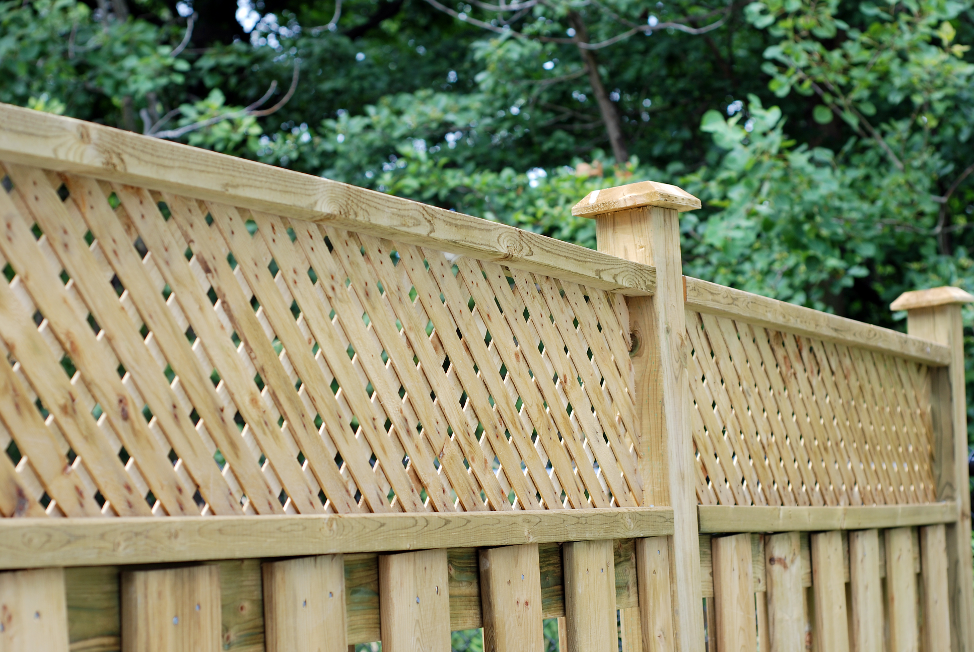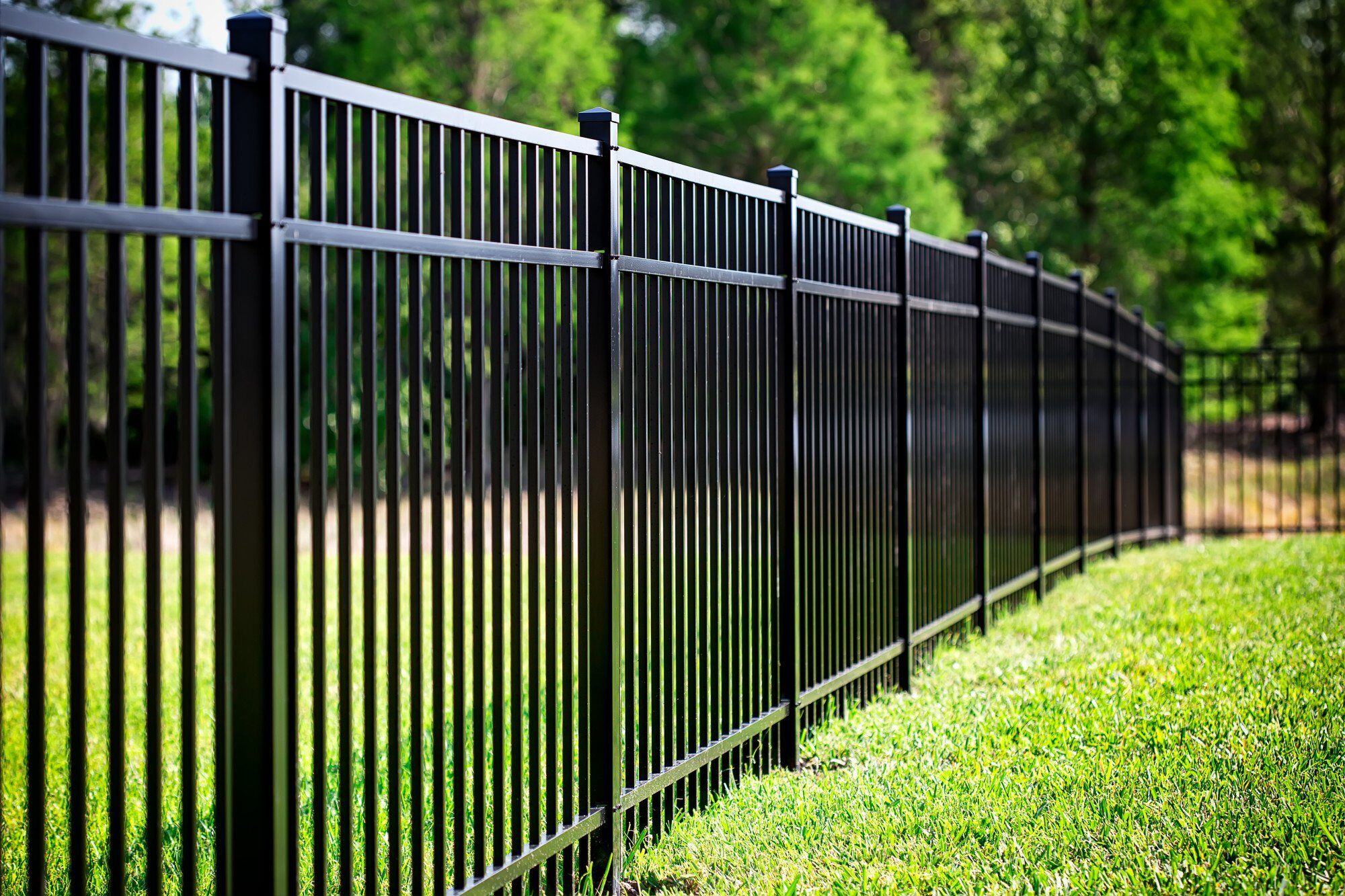All Categories
Featured
When it comes to installing a new fencing, functioning carefully with a skilled fencing contractor is essential to achieving a style that fits both your aesthetic preferences and functional needs. Whether you desire a fencing for personal privacy, security, or to enhance the visual charm of your residential or commercial property, teaming up with a skilled expert will help you bring your vision to life. Below's a step-by-step overview on exactly how to deal with a fence professional to design a fencing that fits your specific demands.
![]()
Privacy: A tall, strong fencing that obstructs the view from neighbors or passing traffic. Safety and security: A fence that keeps kids, pets, or intruders secure, such as a lockable gate or an impervious barrier. Visual Appeal: A fence that enhances your home's visual appeal, perhaps with a decorative or attractive design. Border Meaning: A simple fencing that marks building lines and divides your room from others. Discuss your concerns with the service provider so they can much better recognize your objectives. Be clear about any extra features you might desire, such as customized entrances, attractive post caps, or gain access to points.
Timber: Uses a natural look and superb personal privacy however calls for much more upkeep with time. Plastic: Durable, low-maintenance, and readily available in various styles, though much less customizable than wood. Steel: Wrought iron, steel, or aluminum are optimal for protection and an advanced appearance but can be much more expensive. Chain-Link: An affordable option that provides safety but lacks privacy and style. Composite: A mix of timber and plastic, providing sturdiness with marginal maintenance. Your contractor will certainly use referrals based upon your spending plan, climate, and visual choices. They'll assist you choose whether a timeless timber fence, a modern-day vinyl layout, or a strong steel fence is the very best choice for your building.
Inclines or unequal terrain: If your land has a slope, the contractor might advise a tipped fence design or customized options to make certain the fence looks even and functions with the land. Challenges: Trees, bushes, or garden attributes may influence where the fence can be put. These will need to be dealt with to stay clear of unnecessary removal of landscape design or other structures. Gain access to factors: If you need entrances for lorries or pedestrians, talk about positioning and style with your professional. By evaluating the property's design, the contractor can develop a fencing that's both functional and visually pleasing.
If permits are called for, your professional can aid with the documentation and guarantee that all legal requirements are met. This will aid prevent costly hold-ups or fines throughout setup.
Personalized Gates: Whether for a driveway or pedestrian access, entrances can be an integral part of the fence style. Talk about the dimension, product, and locking mechanism with your contractor. Ornamental Touches: From ornamental blog post caps to lattice accents or finials, these small information can elevate the look of your fencing. Elevation and Style: Depending on your privacy or safety and security requirements, you might opt for a greater fencing or a certain style (e.g., ranch-style, privacy, or picket) Your service provider needs to give design options and supply insight right into just how each attribute will affect the overall capability and aesthetic of the fencing.
![]()
The timeline for installment will certainly depend upon factors such as the intricacy of the layout and the products chosen. Commonly, the specialist will give an approximated begin day and completion day. Talk about any kind of due dates or time constraints you may have, and make sure that both events settle on a timeline that functions.
Products and style specs. Complete expense and payment schedule. Timeline and expected completion date. Warranty or warranty info. Any type of various other agreed-upon terms (e.g., cleaning and post-installation assistance) Testimonial the contract carefully and ask concerns regarding anything that's uncertain. When everything is in order, authorize the contract and prepare for installment.
If you observe any discrepancies between the setup and the strategy, resolve them quickly with your specialist to see to it the final item satisfies your assumptions.
Verdict. Designing a fence that fits your needs involves thoughtful planning and clear communication with your specialist. By clearly outlining your goals, comprehending available materials, and teaming up on the style, you can produce a fencing that improves your property's protection, privacy, and curb charm. With the appropriate professional at hand, the procedure can be smooth, guaranteeing that the end product is both useful and gorgeous for several years to find.

- Start with Clear Goals and Assumptions. The first step in designing a fence is recognizing your demands. Think of the factors you're mounting the fencing and what you want to accomplish with it. Some usual objectives include:
Privacy: A tall, strong fencing that obstructs the view from neighbors or passing traffic. Safety and security: A fence that keeps kids, pets, or intruders secure, such as a lockable gate or an impervious barrier. Visual Appeal: A fence that enhances your home's visual appeal, perhaps with a decorative or attractive design. Border Meaning: A simple fencing that marks building lines and divides your room from others. Discuss your concerns with the service provider so they can much better recognize your objectives. Be clear about any extra features you might desire, such as customized entrances, attractive post caps, or gain access to points.
- Pick the Right Materials. The materials you pick for your fencing will impact its upkeep, toughness, and appearance requirements. With your goals in mind, research the most effective products and review them with your specialist. Typical products consist of:
Timber: Uses a natural look and superb personal privacy however calls for much more upkeep with time. Plastic: Durable, low-maintenance, and readily available in various styles, though much less customizable than wood. Steel: Wrought iron, steel, or aluminum are optimal for protection and an advanced appearance but can be much more expensive. Chain-Link: An affordable option that provides safety but lacks privacy and style. Composite: A mix of timber and plastic, providing sturdiness with marginal maintenance. Your contractor will certainly use referrals based upon your spending plan, climate, and visual choices. They'll assist you choose whether a timeless timber fence, a modern-day vinyl layout, or a strong steel fence is the very best choice for your building.
- Understand Your Home Format. The next action is assessing the home format. Your service provider will certainly need to check your land to identify the most effective fencing layout. The design will affect decisions such as the fencing's elevation, placement, and the kind of materials utilized. Take Into Consideration:
Inclines or unequal terrain: If your land has a slope, the contractor might advise a tipped fence design or customized options to make certain the fence looks even and functions with the land. Challenges: Trees, bushes, or garden attributes may influence where the fence can be put. These will need to be dealt with to stay clear of unnecessary removal of landscape design or other structures. Gain access to factors: If you need entrances for lorries or pedestrians, talk about positioning and style with your professional. By evaluating the property's design, the contractor can develop a fencing that's both functional and visually pleasing.
- Recognize Regional Codes and Regulations. Before moving forward, inspect regional zoning legislations, building codes, and community constraints. Many areas have policies on fencing height, product kinds, and placement. Your fence specialist will certainly be acquainted with local rules and can assist guarantee that your layout adheres to these guidelines.
If permits are called for, your professional can aid with the documentation and guarantee that all legal requirements are met. This will aid prevent costly hold-ups or fines throughout setup.
- Work Together on Layout Functions. Now comes the enjoyable part-- designing your fence. Deal with your contractor to choose the details that will individualize the style to your preference. You might intend to include components like:
Personalized Gates: Whether for a driveway or pedestrian access, entrances can be an integral part of the fence style. Talk about the dimension, product, and locking mechanism with your contractor. Ornamental Touches: From ornamental blog post caps to lattice accents or finials, these small information can elevate the look of your fencing. Elevation and Style: Depending on your privacy or safety and security requirements, you might opt for a greater fencing or a certain style (e.g., ranch-style, privacy, or picket) Your service provider needs to give design options and supply insight right into just how each attribute will affect the overall capability and aesthetic of the fencing.

- Finalize the Budget Plan and Timeline. After limiting the design, it is necessary to go over the spending plan and timeline for installation. Your professional needs to provide a thorough quote that includes the expense of materials, labor, and any kind of additional attributes you have actually asked for. Make sure to clear up any type of prices for unanticipated problems, such as difficult dirt conditions or the need for unique tools.
The timeline for installment will certainly depend upon factors such as the intricacy of the layout and the products chosen. Commonly, the specialist will give an approximated begin day and completion day. Talk about any kind of due dates or time constraints you may have, and make sure that both events settle on a timeline that functions.
- Testimonial and Sign the Agreement. As soon as you're satisfied with the style, budget plan, and timeline, your professional will provide an agreement detailing all the details of the job. The contract should include:
Products and style specs. Complete expense and payment schedule. Timeline and expected completion date. Warranty or warranty info. Any type of various other agreed-upon terms (e.g., cleaning and post-installation assistance) Testimonial the contract carefully and ask concerns regarding anything that's uncertain. When everything is in order, authorize the contract and prepare for installment.
- Monitor the Installment Refine. Throughout the setup procedure, remain in touch with your contractor to make sure that the job is being carried out according to the agreed-upon strategy. While you don't require to oversee every action, periodic check-ins can help make certain that any type of issues are dealt with without delay.
If you observe any discrepancies between the setup and the strategy, resolve them quickly with your specialist to see to it the final item satisfies your assumptions.
Verdict. Designing a fence that fits your needs involves thoughtful planning and clear communication with your specialist. By clearly outlining your goals, comprehending available materials, and teaming up on the style, you can produce a fencing that improves your property's protection, privacy, and curb charm. With the appropriate professional at hand, the procedure can be smooth, guaranteeing that the end product is both useful and gorgeous for several years to find.
Latest Posts
Join WyHy FCU – Top Benefits for Your Future
Published May 26, 25
1 min read
How Chicago Drivers Pick Montclare Auto Repair for Trusted Service and Great Savings
Published May 22, 25
1 min read
Discover Special Auto Repair Specials in Chicago at Montclare Auto Repair
Published May 21, 25
1 min read